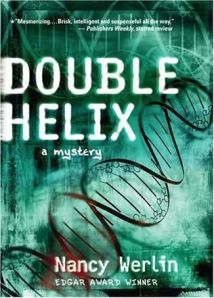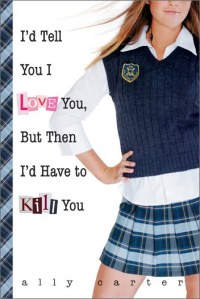 Westerfeld, Scott. (2004) Midnighters: The Secret Hour. New York, NY: HarperCollins Children’s Books
Westerfeld, Scott. (2004) Midnighters: The Secret Hour. New York, NY: HarperCollins Children’s Books
Plot Summary:
Jessica Day has just moved Bixby, a small town in the great state of Oklahoma. She isn’t sure quite what she was expecting, but it certainly didn’t include waking up at midnight one night to find the rain that had been pouring a moment ago suspended in the air as if time had stopped. Jessica quickly learns that most everything else spends the secret hour frozen in place; the only people or creatures that are ever awake during it are herself and a handful of her classmates at Bixby High. Well, and the Darklings, who exist only during the secret hour and seem especially determined to hunt down Jessica. Luckily Jessica and her new friends, Dess, Rex, Melissa, and Jonathon have some very unusual but sometimes useful superpowers.
Critical Evaluation:
Westerfeld’s plot concepts are are always crack for the imagination, and his execution here isn’t half bad either. There’s nothing about this story that doesn’t sound odd when laid out and summarized, but on the page it’s exciting and magical rather than absurd. Neither is everything perfect either, the teens superpowers come with a high price and their friendships are complicated and full of baggage. It’s fairly complicated for a young adult novelabout superheros, but it never lets this get in the way of having fun.
Reader’s Annotation:
She isn’t sure quite what she was expecting from Bixby, OK but it certainly didn’t include waking up at midnight one night to find the rain suspended in the air as if time had stopped.
Author Information:
http://scottwesterfeld.com/forum/
@scottwesterfeld
One of the great things about Scott Westerfeld’s site is that he doesn’t just encourage fans to engage with him, he encourages them to interact with each other and with his books; not only does his site include a forum but his blog will regularly feature fan art and creations.
Genre:
Action Series
Booktalking Ideas:
I love recomending this book to library patrons and will usually talk up either the Secret Hour, the Darklings, or the superpowers. For a booktalk I would try to touch on all three.
Reading Level/Target Age:
6th grade/14-17
Possible Controversy:
There might be some people who have religious objections to the premise – especially the presence of the Darklings. Other than that it’s unlikely to be challenged.
Reasons for Choosing This Title:
Once I read the premise – after noticing the book’s cover – I was totally drawn in.








